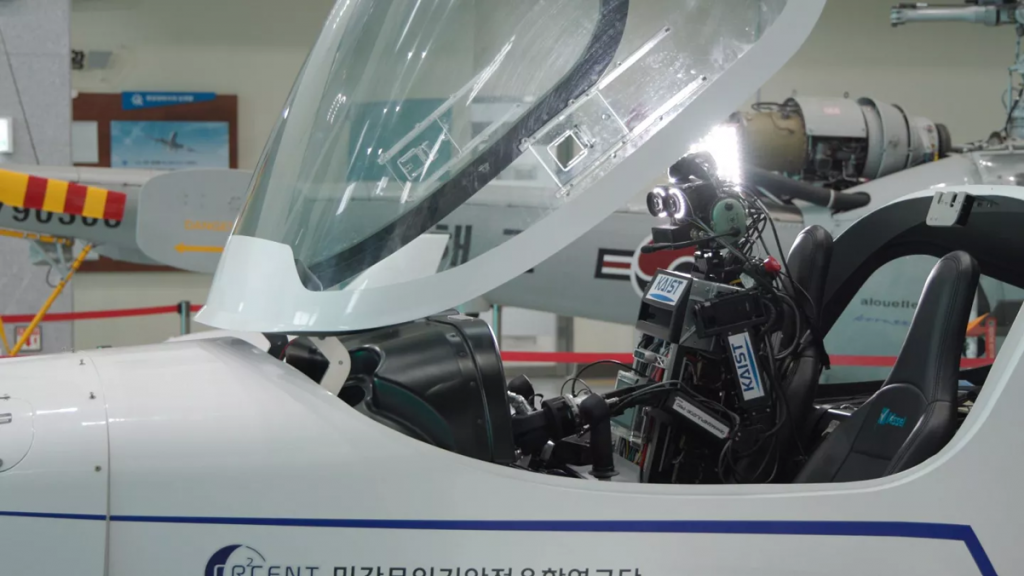In a striking leap towards cutting-edge aviation technology, researchers at the Korea Advanced Institute of Science & Technology (KAIST) are pioneering the creation of “Pibot,” a humanoid pilot designed to navigate aircraft without altering the cockpit.
Articulating this innovation, David Shim, an associate professor of electrical engineering at KAIST, elucidates, “Pibot is a humanoid robot that can fly an airplane just like a human pilot by manipulating all the single controls in the cockpit, which is designed for humans.” Among its noteworthy talents, “Pibot” harbors the ability to memorize global Jeppesen aeronautical navigation charts—a feat beyond the grasp of human pilots.
The synergy of human-like habits and robotic precision is a defining trait of “Pibot.” Shim underscores this by explaining that despite human pilots’ adaptability across various aircraft, the transition can be riddled with challenges stemming from ingrained habits. Herein lies “Pibot’s” strength; it imbibes individual aircraft configurations, enabling it to soar in different aircraft types quickly.
Fueling “Pibot’s” extraordinary prowess is its integration of large language models (LLM), akin to the technology of ChatGPT, into its programming. This infusion empowers the robot to comprehend instructions with a human-like understanding. Shim details this evolution, highlighting the contrast between its predecessor in 2016 and the present-day “Pibot,” enriched by advanced AI technology that facilitates learning from literature and manuals.
Beyond impeccable execution of aircraft operations, “Pibot” extends its role as a dynamic pilot. It shines in emergency scenarios, surpassing human response times and deftly curating real-time flight paths based on live aircraft assessments. Notably, “Pibot” isn’t confined to its humanoid form alone; it seamlessly integrates into aircraft, enabling fluid communication. The robot interacts with air traffic controllers and cockpit personnel through synthesized speech, potentially positioning it as a future pilot or first officer.
Standing at 5.24 feet (160 cm) tall and weighing 143.3 pounds (65 kg), “Pibot” is more than just a technological marvel—it embodies a stepping stone towards multifaceted robotics. Humanoid architecture isn’t merely a vessel; it is a strategic choice designed to embrace tasks inherent to human environments. Shim underscores this by stating, “The human form may not be super efficient, but we designed Pibot to be a humanoid form because all things are built for humans. We can have eight arms and four eyes, but the human form is somehow optimal.”
While “Pibot” is currently in the throes of development, its creators have set their sights on a 2026 completion, potentially heralding a new era of aviation advancement.

